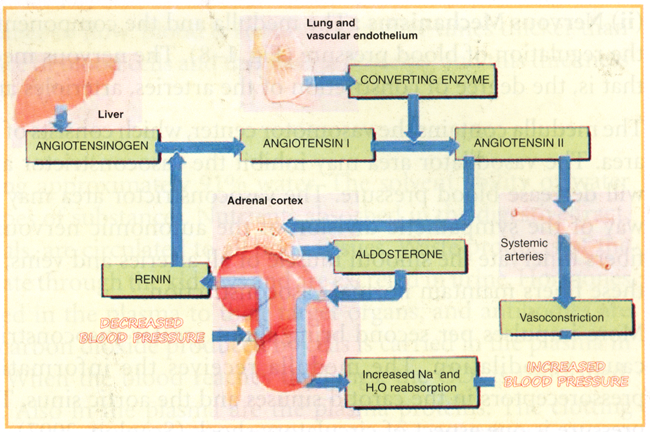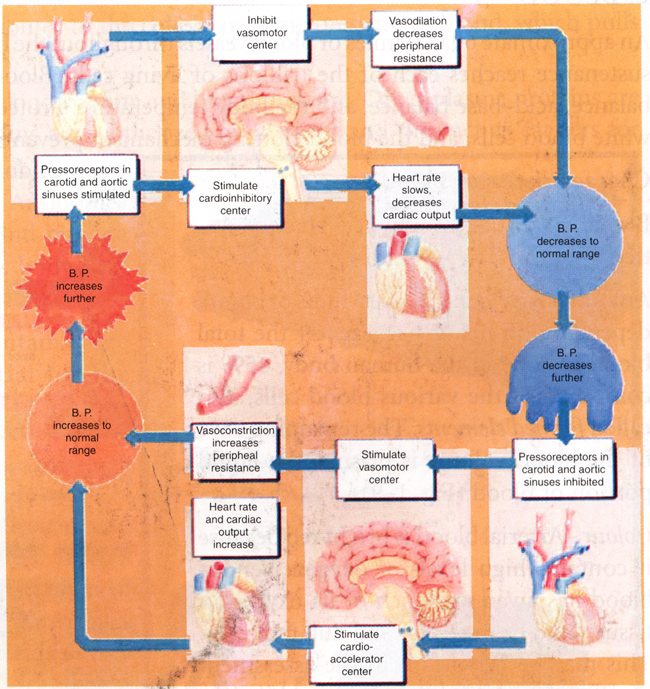The mechanisms that regulate systemic blood pressure may be divided into two types: intrinsic mechanisms and nervous mechanisms. The nervous mechanisms involve the nervous system, and the intrinsic mechanisms do not require nerve impulses.
- Intrinsic Mechanisms: Intrinsic mechanisms operate within the organ because of their internal peculiarities. One such organ is the heart. When venous blood comes back cardiac muscle stretched, and the ventricles pump more forcefully. This leads to increased cardiac output and blood pressure. This is what happens during exercise, when a higher blood pressure is needed. When exercise ends and venous return decreases, the heart pumps less forcefully, which helps return blood pressure to a normal resting level.
Another intrinsic mechanism operates in the kidneys. Blood flowing through the kidneys the process of filtration decreases and less urine is formed. This decrease in urinary output preserves blood volume so that it does not decrease further, following severe hemorrhage or any other type of dehydration, this is very important to maintain blood pressure. The kidneys are also involved in the renin angiotensin mechanism. When blood pressure decreases, the kidneys secrete the enzyme renin, which initiates a series of reactions that result in the formation of angiotensin II (Fig. 1-7). Angiotensin II causes vasoconstriction and1 stimulates secretion of aldosterone by the adrenal cortex, both of which will increase blood pressure. - Nervous Mechanisms: The medulla and the component of brain, ANS are directly involved in the regulation of blood pressure (Fig. 1-8). The nervous mechanism involves peripheral resistance, that is, the degree of constriction of the arteries, arterioles and the veins.
The medulla contains the vasomotor center, which consists of a vasoconstrictor area and a vasodilator area. The vasodilator area may inhibit the vasoconstrictor area to bring about vasodilation, which will decrease blood pressure. The vasoconstrictor area may bring about more vasoconstriction by way of the sympathetic division of the autonomic nervous system. Sympathetic vasoconstrictor fibres innervate the smooth muscle of all arteries and veins, and several impulses per second along these fibres maintain normal vasoconstriction.
More impulses per second bring about greater vasoconstriction, and fewer impulses per second cause vasodilation. The medulla receives the information to make such changes from the press receptors in the carotid sinuses and the aortic sinus. The inability to maintain normal blood pressure is one aspect of circulatory shock (Scanlon, 2007).

Fig. 1-7. The renin-angiotensin mechanism.

Fig 1-8. Nervous mechanisms that regulate blood pressure.
 Prof. J.P.N. Mishra
Prof. J.P.N. Mishra
